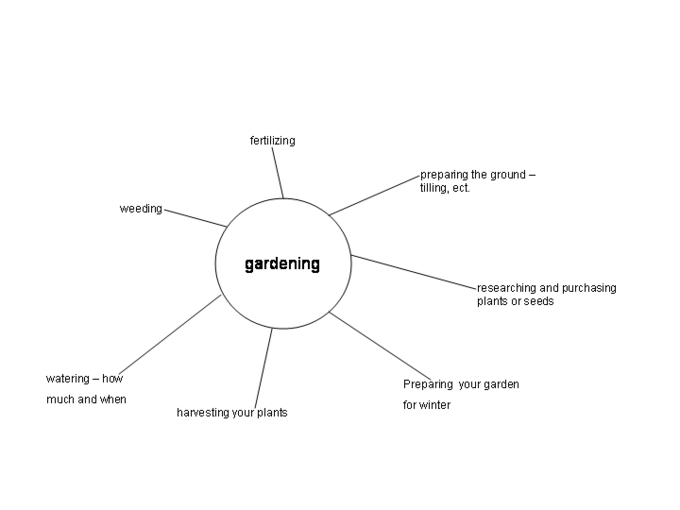12 Selecting a Topic: Brainstorming your ideas
Learning Objectives
It is important to spend time thinking about your speech topic before you begin the speech making process.
- Select a topic that you can research.
- Connect the topic to your own interests and the audience.
Selecting a Topic
Before crafting the body of your speech, you must select a topic, determine a purpose, and write a thesis statement. When choosing your speech topic, brainstorm to generate many ideas, and distill those ideas to find your singular topic. As you begin to prepare for any speech, it’s important to pin down exactly about what you plan to talk. You might have been given a specific topic by a professor or supervisor, or you may be simply invited to speak at an event where the topic is up to you. Knowing how to carefully select your topic is an important first step in preparing for a successful speech.

Brainstorming
One of the best ways to help solidify your speech topic is to brainstorm. You can brainstorm by yourself, or you might want to bring in a few friends, colleagues, or classmates to help you come up with ideas in a group setting. You can brainstorm using a number of different exercises.
Word Association
Start with a broad topic idea. What words, topics, or other subjects do you associate with that first topic? Now what words, topics, or other subjects do you associate with the following word? Continue this chain of word association to give you a broad spectrum of ideas.
Clustering
Also known as mind-mapping, clustering gives your word association a visual form. Start with your main idea and draw a circle around it, thinking of it as the hub of a wheel. Now, begin to write other associated ideas, topics, or subcategories related to that main topic around the hub, and connect them as separate spokes. From each spoke, begin to jot down other associated ideas and thoughts. As your cluster begins to grow, you might want to connect smaller spokes to one another and create new links between subjects.
Freewriting
This is probably the simplest brainstorming method of all. Set a timer and begin writing whatever thoughts or ideas come to mind about your particular subject. You might find it easier to type your freewriting instead of writing it by hand, so you can keep up with your thoughts faster. Whatever you do, don’t stop writing.
Another way of freewriting is to record yourself talking for a set period of time and then transcribe your key points to go back to and clarify later. Once your time is up, go back and highlight or circle relevant points or topics that stick out for you. You’ll refine these later.
Distill Your Ideas into One Topic
Once you’ve brainstormed your many ideas, it’s time to refine your ideas and distill them into one topic. Look for themes, patterns, and commonalities when going through your brainstorming notes. Use these themes to help guide you toward a singular topic.
Do a Little Homework
While you will definitely research your topic, you might want to do some “presearch” – that is, a little research before the real research. Do a quick scan to see what others have said or written about your topic. This might give you even more ideas on how to refine and distill your topic, or more appropriately adapt it to your audience or venue.
Activity
Key Takeaways
It is important to brainstorm your topic and the possibilities of the topic.
- Consider how you will continue to develop this topic through researching and connecting with your audience.
- You might consider audience’s understanding of this topic and how you can add value to their knowledge.
- Once you have selected a topic, you can move to your next speech making step.

